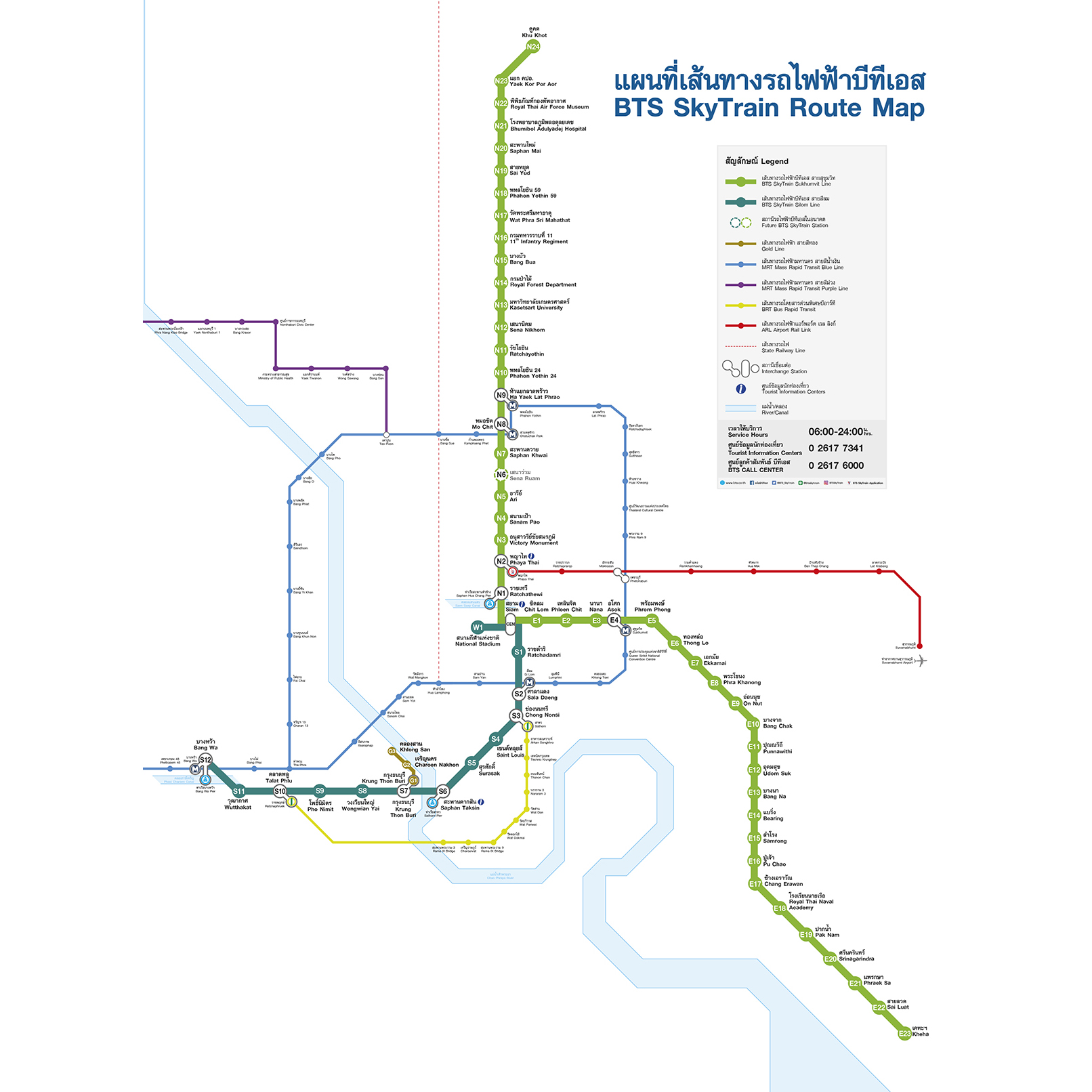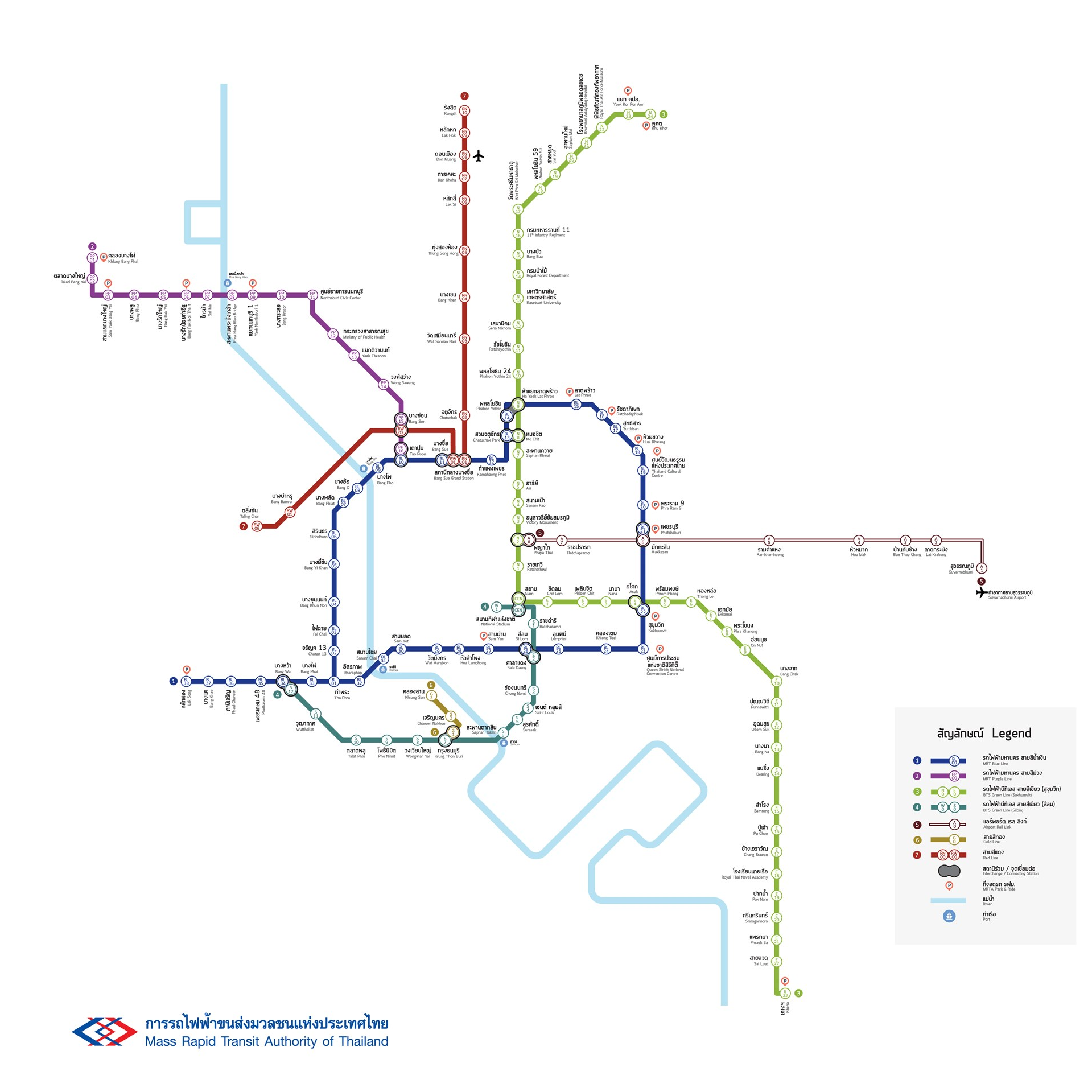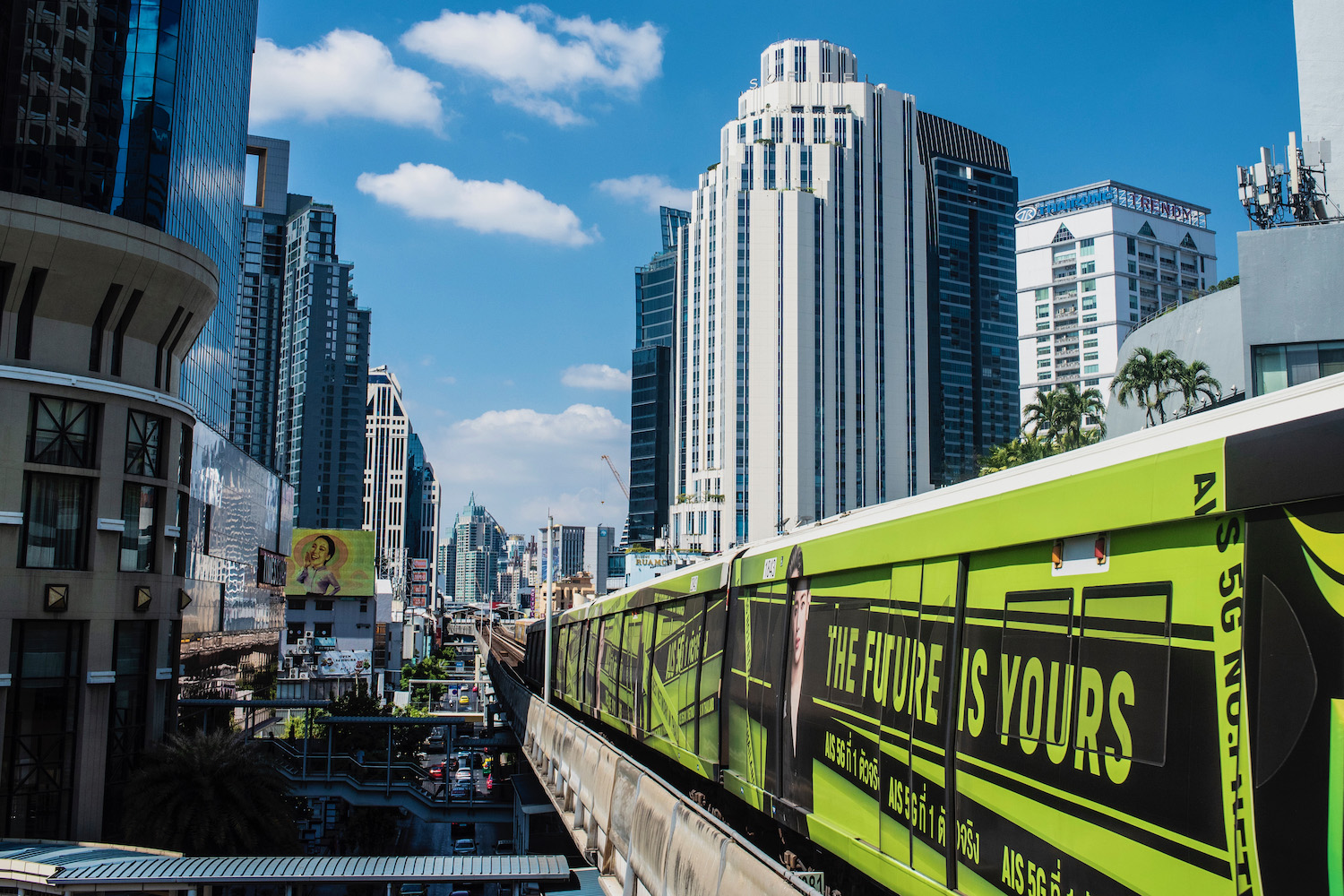When I tell people I (almost) never take taxis in Bangkok, most are shocked. This comes from two main places, depending upon the person.
Foreigners (especially those who haven’t spent a lot of time in the capital) don’t understand how I do it—many aren’t aware of just how extensive Bangkok’s train system is. Locals don’t understand why. It’s better, they say, to sit in traffic in your own car than to zoom above it on a crowded train.
I’m not here to litigate whether or not Bangkok’s public transportation is useful. What I am here to do, however, is to help you compare BTS vs MRT, and to understand the best ways to use both.
Why All of Bangkok’s Urban Rail Systems Are Necessary
It’s not a question of taking BTS or MRT—in order to explore Bangkok most effectively, you need to use an “all of the above” approach. For example, since the two BTS lines only meet at one station (Siam), it is often more effective to change to the MRT in order to get a direct route between stations served by either BTS Line, with Asok (Sukhumvit) and Sala Daeng (Silom) being the most obvious pair to exemplify this.
There’s also the fact that Bangkok’s transportation network extends beyond the SkyTrain and the underground. Want to go to Suvarnabhumi Airport? You’ll need to take the Airport Rail Link (ARL), which connects to the BTS at Phaya Thai Station. Other rail lines (such as those operated by the State Railway of Thailand or SRT) are less useful for foreigners, as is the Bus Rapid Transit, or BTS. By contrast, Bangkok’s canal and river boats are extremely useful, but under-utilized.

Ways to Compare Bangkok’s BTS with the MRT
Network
As of 2025, both the BTS and MRT have two lines of relevance to most tourists: the BTS Silom (dark green) and Sukhumvit (light green) lines; and the MRT Blue and Purple Lines, with the blue being much more useful than the purple. Future MRT lines are planned—and technically-speaking Pink and Yellow “monorail” lines are in operation, though they are of limited utility to non-resident foreigners.
Stations
Another distinction between BTS and MRT? The BTS, which is also—aptly—known as the SkyTrain flies high above the ground, and features open-air stations that offer a great view of the city around and below. The MRT, by contrast, is located deep underground, with moody stations made of concrete and glass that give off a utilitarian yet almost futuristic aesthetic, all cooled by amazing Thai air conditioning.
Onboard environment
Within BTS and MRT trains, the onboard experience is quite similar, with plenty of seating (and standing) room, LCD screens that display both ads and information about the journey and good cleanliness, not to mention polite fellow users. Superficially, the MRT features brighter colors; you can also enjoy city views out of the train, which is impossible along the more central, underground routes of the MRT (which does go above-ground in some outlying areas, to be fair).
Price and payment
You will likely use both MRT and BTS, but you won’t pay for them the same way. The BTS is more restrictive—you either need to buy individual tickets using cash or QR, or buy and load a Rabbit card (which you can technically do with credit card, but in practice can only use cash for) and use that. By contrast, the MRT allows you to tap an EMV Visa or Mastercard to enter, though you should note that the gates aren’t equipped with NFC technology—you can’t use ApplePay.
Usefulness
To some extent, the usefulness of urban rail in Bangkok depends upon where you’re going. The MRT is the only system that runs through the Old City of Rattanakosin; the BTS dominates if you need to travel east-west along Sukhumvit Road. As a general rule, the only effective way to explore Bangkok comprehensively is to use both systems, and to learn how they work in concert with one another.

Why Doesn’t Bangkok Have a Single Transport Card?
When I was living in Bangkok between 2017-2019, it seemed like the long-rumored Mangmoom (Spider) card was finally about to become a reality. This card, had it come into existence, would’ve allowed holders to access all public transportation in Bangkok, and potentially even to pay in taxis or at convenience stores. Think PASMO or Suica in Japan, or EasyCard in Taiwan. Sadly, as of late 2025, it remains elusive.
Rather than the distinction between MRT or BTS, the blame for this falls entirely on the shoulder of BTS management. Namely, the Rabbit card and their refusal to let go of it. I’ve often wonderful why rather than supplanting it with something else, they couldn’t just expand it to cover the MRT, the ARL, buses, boat and normal trains. Then again, this is a blog about travel in Thailand, not the Kingdom’s often puzzling business practices.
Other FAQ About Bangkok’s MRT vs BTS
Which is cheaper, MRT or BTS in Bangkok?
The MRT is slightly cheaper than the BTS, by a few Baht per station traveled. However, this difference is most noticeable to working-class locals, and to tourists on an extreme budget. For the average traveler, using Bangkok’s urban rail network is a bargain all around.
Is Bangkok MRT good?
I love riding the Bangkok MRT. From the cold air conditioning in stations, to the futuristic feeling of them being so deep underground, riding the MRT is one of my favorite ways to get around Bangkok. On the other hand, with only two underground lines open as of 2025, it’s not as useful as it will one day become.
Is Sukhumvit Line MRT or BTS?
The Sukhumvit Line, which is also sometimes known as the Light Green Line, is part of the BTS SkyTrain system. This is not to be confused with Sukhumvit Station, which is on the MRT Blue Line, and connects via escalator and sky bridge to BTS Asok Station.
The Bottom Line
Comparing BTS vs MRT is one of the best ways to understand Bangkok, and how to get around the city. The BTS is extremely useful in modern districts of Bangkok, such as Silom and Sukhumvit. The MRT, meanwhile, connects Bangkok’s futuristic core with the old cities of Rattanakosin and Thonburi. When combined with other transport mode—the Airport Rail Link (ARL), as well as Bangkok’s various public boats—it’s entirely possible to explore Bangkok without getting in a single taxi. I almost never have, over the nearly two decades I’ve been traveling here. The best way to leverage my almost-20 years of Thailand travel experience? Commission a custom Thailand itinerary today!






